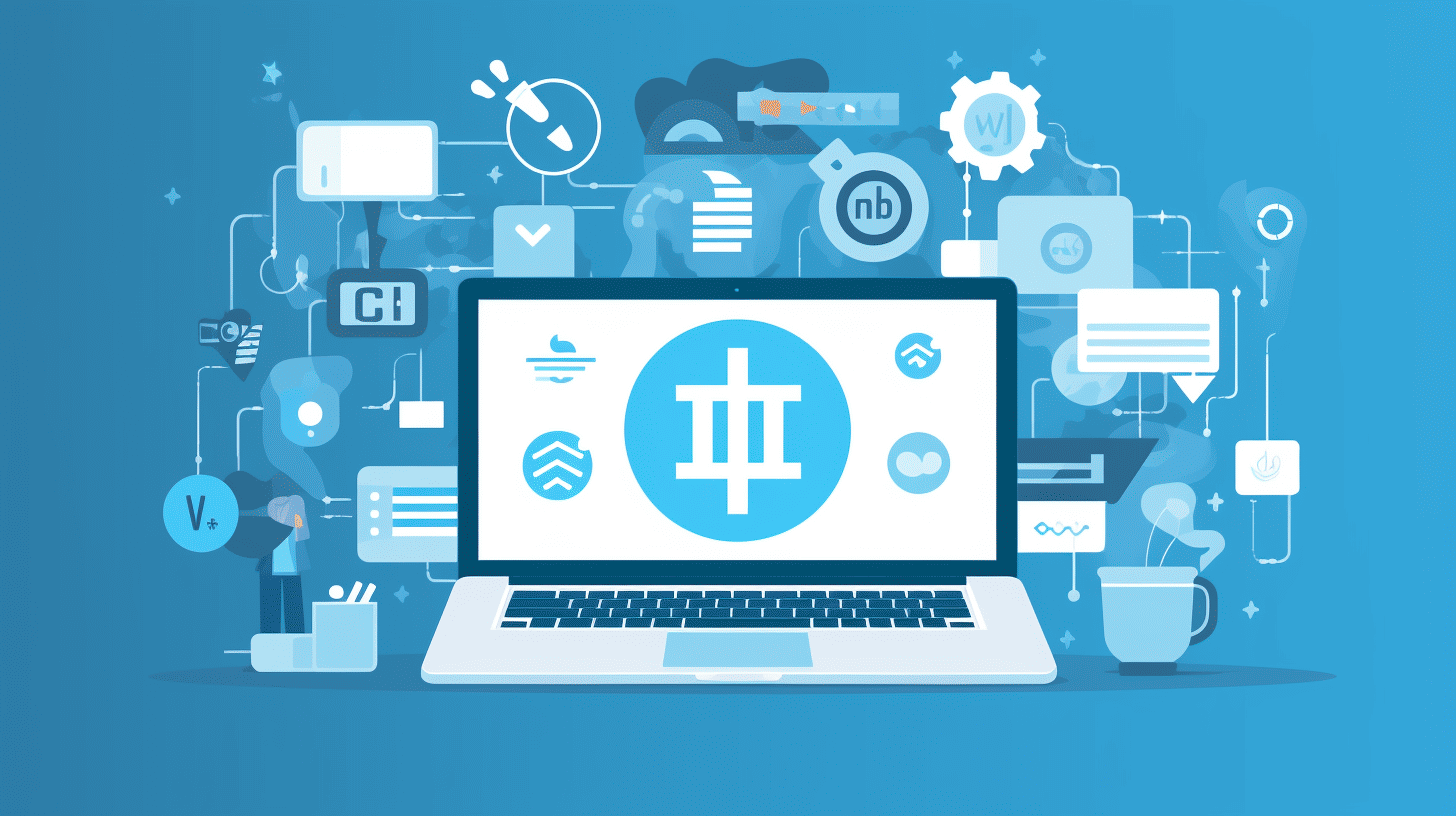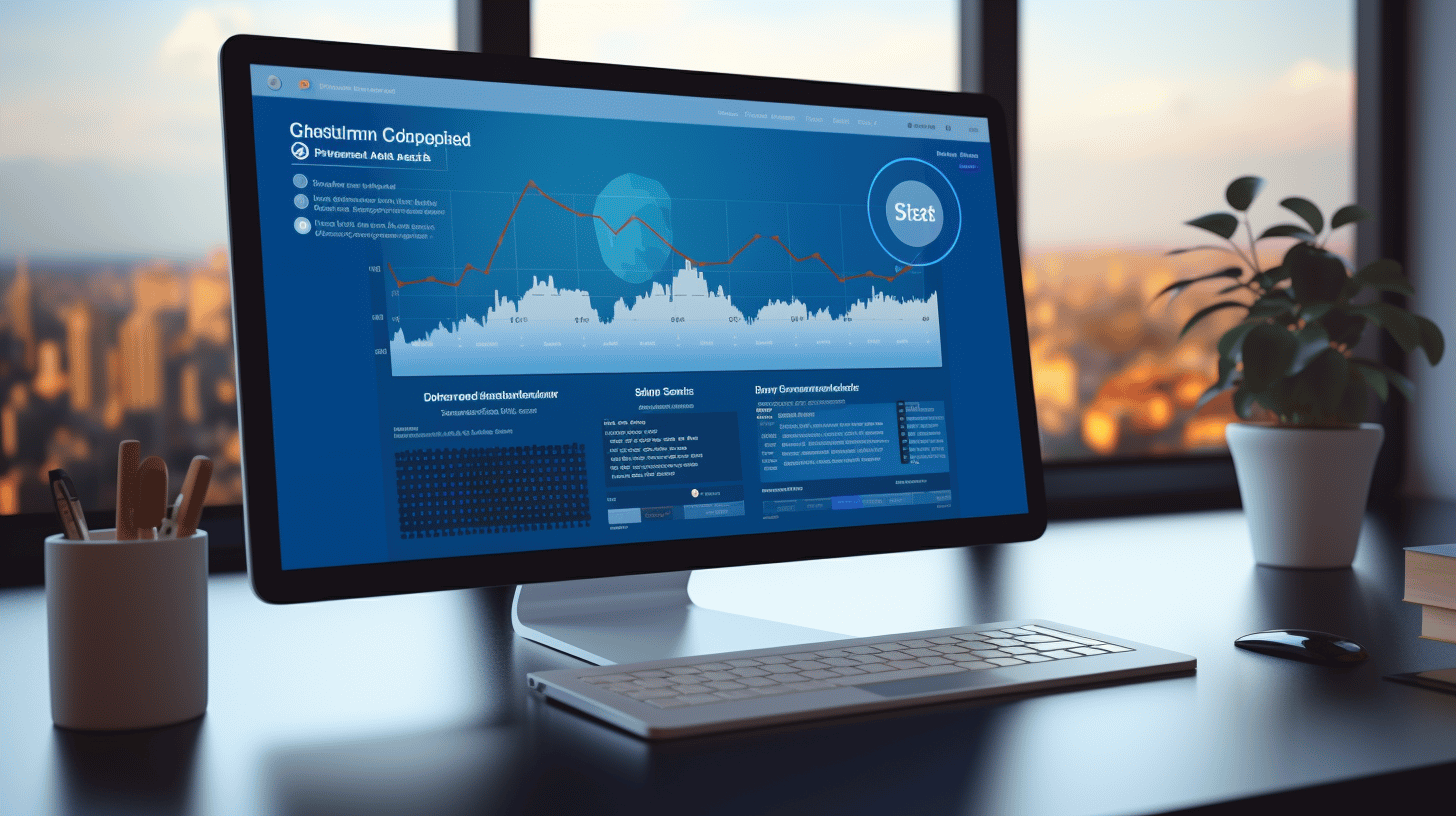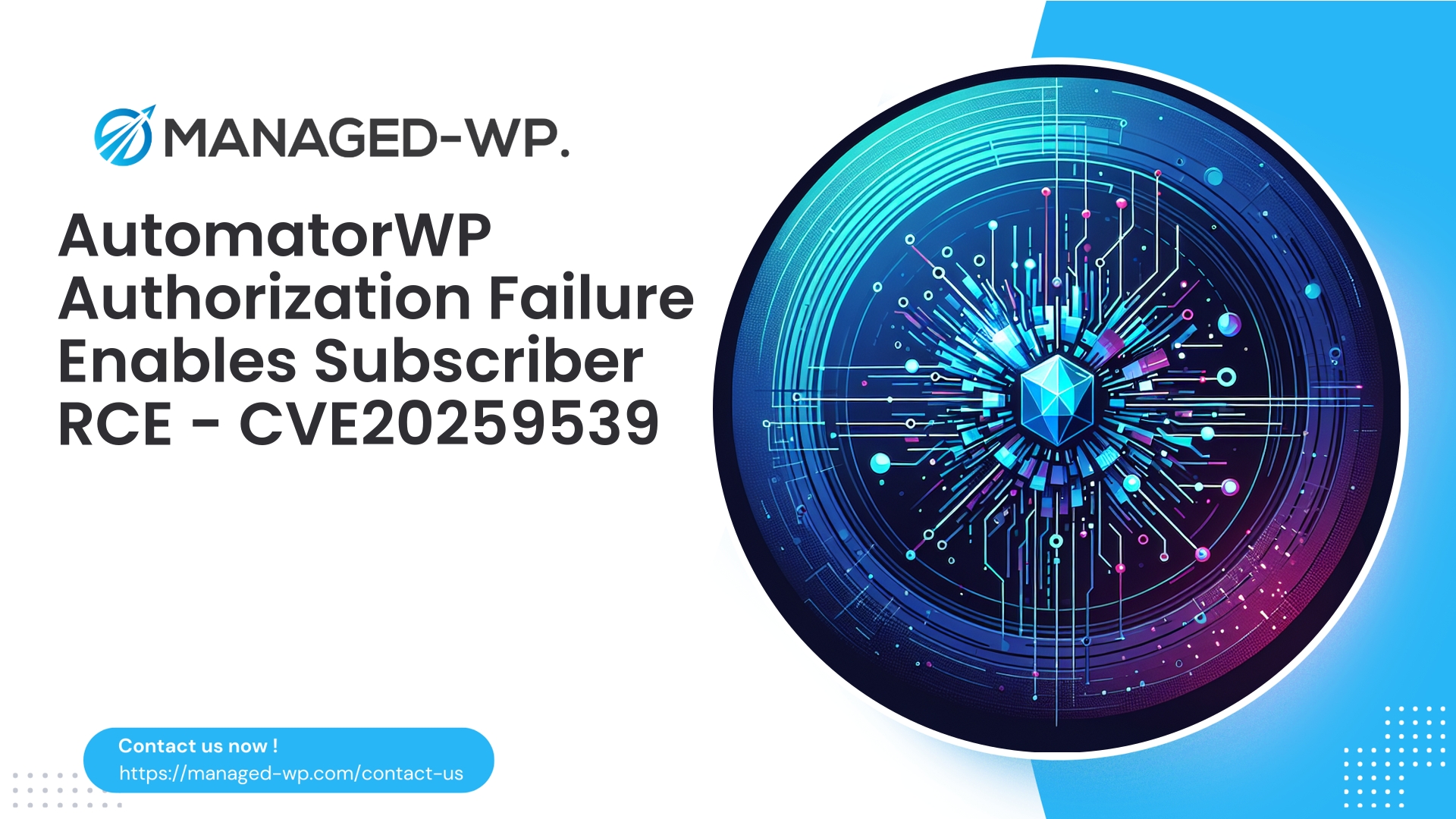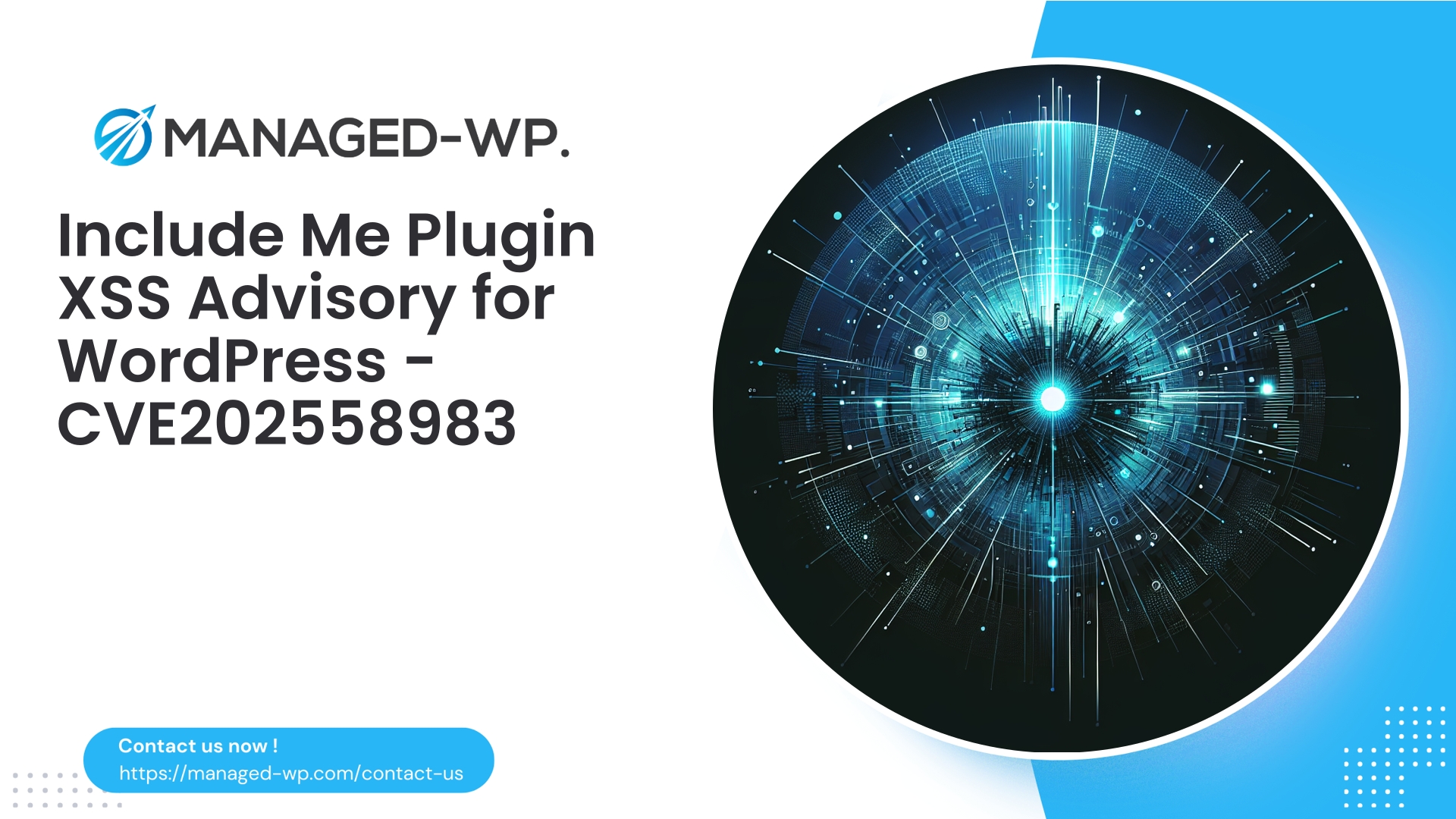| 插件名称 | 医生 |
|---|---|
| 漏洞类型 | 未经身份验证的密码更改 |
| CVE编号 | CVE-2025-9114 |
| 紧急 | 高的 |
| CVE 发布日期 | 2025-09-08 |
| 源网址 | CVE-2025-9114 |
关键安全警报:Doccure 主题(≤ 1.4.8)漏洞 CVE-2025-9114 — 所有 WordPress 所有者必须采取的紧急措施
作者: 托管 WordPress 安全团队
日期: 2025-09-09
类别: 安全、WordPress、WAF、事件响应
我们发现 Doccure WordPress 主题(1.4.8 及更早版本)存在严重的身份验证漏洞,未经身份验证的攻击者可以随意更改任何用户的密码。本安全公告概述了该漏洞的风险、推荐的缓解策略、检测方法,以及 Managed-WP 的虚拟补丁功能如何在官方修复程序发布之前帮助您保护 WordPress 网站。
执行摘要——当前风险及建议措施
Doccure WordPress 主题(版本 1.4.8 及更早版本)存在一个严重漏洞 (CVE-2025-9114),攻击者无需任何身份验证即可强制重置用户密码。该漏洞的 CVSS 评分为 9.8,反映了其严重性。利用此漏洞,攻击者将获得完整的管理员帐户控制权限,从而能够安装后门并破坏服务器基础设施。
如果您的网站运行的是 Doccure 或其任何子主题,请将此视为紧急安全事件。在正式补丁发布之前,必须立即采取遏制措施,强制所有特权用户重置密码,并在您的 Web 应用程序防火墙 (WAF) 上部署 Managed-WP 的虚拟补丁,以保护您的基础架构。
本公告涵盖漏洞概述、实用缓解策略、安全操作检测指南、虚拟补丁建议和事件响应建议。
漏洞概述——您需要了解的内容
- 受影响的软件: Doccure WordPress 主题
- 版本:** 1.4.8 及更早版本
- 漏洞类型: 身份验证失效——未经身份验证的任意密码更改
- CVE标识符: CVE-2025-9114
- 身份验证要求: 无(未经认证)
- 严重程度: 严重(CVSS 9.8)
- 官方补丁状态: 截至本公告发布之日,暂无相关信息。
简而言之:此主题存在漏洞,允许未经授权的用户在无需登录的情况下重置任何用户的密码。由于管理员也可能成为攻击目标,因此该问题可能导致攻击者直接控制整个网站。
技术说明——了解风险(非剥削性风险)
这类身份验证漏洞源于公开可访问的端点执行特权操作(例如用户密码更改),但未强制执行适当的身份验证和授权检查。典型的根本原因包括:
- 接受 POST 请求进行密码重置的 AJAX 或 REST 端点,无需 nonce 验证或功能检查。
- 使用可预测或不安全的参数(例如用户 ID 或电子邮件),而未验证是否拥有有效的密码重置令牌。
- 不安全的直接对象引用 (IDOR) 允许攻击者指定和修改任意用户帐户。
- 服务器端缺乏对请求来源和预期操作的适当验证。
攻击者向这些端点发送精心构造的请求,指定受害者的用户名和新密码,服务器接受并应用这些请求,而无需验证身份。
为了保护我们的社区,我们有意隐瞒了具体的攻击代码。我们只专注于检测、缓解和应对攻击的方法。
对 WordPress 生态系统的关键影响
- 管理员接管: 未经授权的密码重置操作会让攻击者安装持久后门、创建额外的管理员帐户、修改网站内容并提取敏感数据。
- 易于自动化的漏洞利用: 由于无需身份验证,攻击者可以扫描大范围的 IP 地址,并快速攻陷大量网站。
- 更广泛的供应链风险: 依赖于存在漏洞的 Doccure 端点的子主题和插件也会因此而继承这种风险。
- 厂商未提供修复方案: 如果不能立即修复漏洞,许多网站仍然会面临风险,这使得采取防御措施的紧迫性更加凸显。
关键的紧急行动——24小时内遏制和缓解
如果您的网站使用 Doccure 主题(或其衍生主题),请立即实施以下安全控制措施:
- 将网站置于维护或离线模式 在可行的情况下,限制应对期间的暴露。
- 切换到安全、默认的 WordPress 主题 (例如,暂时使用 Twenty Twenty-X)。如果关键站点功能依赖于 Doccure,请考虑创建一个访问权限受限的测试克隆环境,同时修复漏洞。
- 阻止对易受攻击的主题端点的访问 使用 Web 服务器配置(nginx/Apache)或 Managed-WP 的 WAF:
- 拒绝向与密码更改功能相关的 URI 发送 POST 请求。
- 强制重置所有特权帐户的密码 并鼓励使用强密码和唯一密码,同时提供一次性重置令牌。
- 启用多因素身份验证 (MFA) 立即对所有管理员级别用户生效。
- 审核用户帐户 针对可疑创建或权限提升。
- 监控日志 针对主题端点的可疑 POST 请求和意外的密码重置事件(详情请参见检测部分)。
- 在疑似泄密案件中: 隔离该站点,保存所有日志,并按以下概述开始正式的事件响应。
始终将 Managed-WP 虚拟补丁应用于 WAF,以实时阻止已知的漏洞利用尝试,从而补充手动缓解措施。
虚拟补丁和WAF保护——防止漏洞利用的最快屏障
当厂商提供的补丁不可用时,Managed-WP 的 Web 应用防火墙可立即使用虚拟补丁来降低风险。我们的托管规则会针对易受攻击的请求模式,同时允许合法流量通过。
推荐的屏蔽策略包括:
- 限制对特定主题文件或处理密码重置的端点的 POST/PUT 方法。
- 阻止包含可疑参数组合的请求,例如在请求正文中针对 Doccure 主题路径的“user_id”或“email”加上“password”或“new_password”。
- 对用户修改请求强制要求提供 WordPress nonce 或自定义令牌,阻止未经有效验证的请求。
- 对向密码更改端点发出可疑请求量的 IP 地址进行限流或屏蔽。
- 尽可能限制仅通过受信任的 IP 地址访问 wp-admin 和 admin-ajax.php。
WAF 阻止逻辑示例(请根据您的系统进行调整):
- 阻止 POST 请求
/wp-content/themes/doccure/如果正文包含“密码”。 - 阻止 POST 请求
/wp-admin/admin-ajax.php使用特定于主题的“操作”参数来修改 nonce 缺失或无效的密码。 - 阻止 POST 请求体中包含用户标识符字段和密码字段的组合。
我们强烈建议先在日志模式或挑战模式下测试规则,以减少误报。
Managed-WP 客户将自动收到这些规则,这是我们主动虚拟修补程序的一部分,从而最大限度地减轻您的响应负担。
检测指南——日志记录、监控和 SIEM 使用
将以下搜索功能集成到您的日志分析工具和 SIEM 平台中,以识别攻击尝试:
- Web服务器日志:
- 向包含“doccure”或主题目录路径的 URL 发送 POST 请求。
- POST 到
/wp-admin/admin-ajax.php具有不寻常的“操作”参数或缺少 nonce/referer 标头。 - 带有请求体参数的请求,例如
密码,新密码,用户, 或者用户身份合并。
- WordPress日志(如果已启用):
- 密码重置或密码更改记录,特别是管理员帐户的记录。
- 密码更改后立即出现可疑登录事件。
- 新管理员用户创建日志。
- 身份验证日志:
- 密码更改事件后,管理员从陌生 IP 地址成功登录。
- 文件完整性监控:
- Doccure 主题文件夹中的意外修改(
/wp-content/themes/doccure/),包括新增或修改的 PHP 文件。 - 不寻常的定时任务或计划任务。
- Doccure 主题文件夹中的意外修改(
SIEM 查询示例(伪 SQL):
- SELECT * FROM logs WHERE request_uri LIKE '%doccure%' AND request_body LIKE '%password%';
- SELECT * FROM events WHERE event_type = 'user.password_changed' AND user_role IN ('administrator', 'editor') AND timestamp > '2025-09-08';
设置以下提醒:
- 任何管理员密码更改。
- 创建新的管理员帐户。
- 可疑的 POST 请求符合漏洞模式。
入侵指标(IoC)
- 日志中记录了未经授权或失败的密码更改尝试。
- 意外新增管理员用户或管理员用户电子邮件地址发生变更。
- WordPress 中的未知计划任务(wp-cron),特别是那些触发外部回调的任务。
- 对主题文件的修改
/wp-content/themes/doccure/. - 对关键文件进行更改,例如
wp-config.php或者.htaccess. - 将 PHP 文件上传到未指定的目录(上传文件夹)或存在混淆的 PHP 文件。
- 服务器与未知外部 IP 地址或域之间建立无法解释的出站连接。
一旦出现这些迹象,就应立即启动事件调查和控制措施。
事件响应——网站遭到入侵时的立即措施
- 保存:
- 以只读模式对文件和数据库进行完整快照备份,以便进行取证审查。
- 保留所有相关日志。
- 遏制:
- 暂时将网站下线或通过 IP 地址限制管理员访问权限。
- 重置所有管理员密码并强制注销所有活动会话。
- 谨慎删除可疑或恶意文件;记录所有修改。
- 根除:
- 查找并删除后门、恶意计划任务以及未经授权的插件或主题。
- 撤销被盗用的 API 密钥或令牌。
- 恢复:
- 从可信来源恢复干净的核心文件、主题文件和插件文件。
- 通过删除或WAF阻止的方式替换存在漏洞的主题文件,直到厂商提供补丁为止。
- 事件后强化:
- 轮换所有身份验证盐和密钥
wp-config.php. - 重新启用多因素身份验证并收紧用户权限。
- 确保文件权限遵循最小权限原则。
- 轮换所有身份验证盐和密钥
- 根本原因分析与披露:
- 记录攻击发生的过程和时间线。
- 酌情通知受影响的利益相关方和托管服务提供商。
如果内部资源有限,请聘请在 WordPress 安全方面经验丰富的专业事件响应服务公司。
长期安全建议
- 强制所有特权账户使用多因素身份验证 (MFA)。
- 遵循最小权限原则——避免使用管理员帐户执行日常任务。
- 定期更新 WordPress 核心程序、主题和插件。
- 实施文件完整性监控解决方案。
- 对管理端点应用速率限制和 IP 信誉规则。
- 使用强度高、独一无二的密码,并配合密码管理器。
- 利用具有虚拟修补功能的 WAF 快速缓解新发现的漏洞。
- 仅使用来自可信来源的主题和插件;定期对自定义代码进行安全审计。
- 强制执行强化的服务器配置:限制在上传目录中执行 PHP,强制执行严格的文件权限,并维护操作系统和软件包补丁。
- 在 CI/CD 管道中集成自定义代码的自动化安全测试,包括 nonce 和授权验证。
开发者最佳实践——保护主题中的敏感操作
- 绝不要在未强制执行安全验证的情况下,通过公共端点暴露敏感操作(密码或权限更改)。
- 始终使用 WordPress nonce(
wp_create_nonce,检查管理员引用结合能力检查(当前用户权限). - 利用 WordPress 原生的密码重置流程,通过电子邮件发送过期令牌。
- 限制 AJAX 处理程序,使未经身份验证的操作无法影响特权数据。
- 验证并清理所有输入;依靠服务器端身份验证,而不是信任客户端数据。
- 在开发周期中加入安全代码审查和静态分析,以发现缺失的身份验证。
Managed-WP 如何保护您的 WordPress 环境
作为您值得信赖的 WordPress 安全托管合作伙伴,Managed-WP 通过以下方式保护您的网站免受 CVE-2025-9114 等严重漏洞的侵害:
- 托管虚拟补丁:
- 快速实施针对 Doccure 漏洞的 WAF 规则,防止漏洞被利用,同时等待官方补丁发布。
- 持续监控与警报:
- 实时检测可疑的 POST 模式、未经授权的密码更改和异常的文件修改,以便您随时了解情况。
- 事件支持和补救指南:
- 明确、可操作的步骤,用于遏制、清理援助、恢复和系统验证。
管理多个站点或客户环境?使用 Managed-WP 的安全服务,实现简化的虚拟补丁和专门的安全配置文件,以最大限度地减少信息泄露后的风险暴露期。
立即获得保护——从 Managed-WP 的免费安全计划开始
我们的 Managed-WP Basic(免费)套餐提供必要的安全功能,包括托管防火墙、无限带宽、企业级 WAF、恶意软件扫描以及针对 OWASP Top 10 漏洞的缓解措施。您可以快速部署虚拟补丁,以应对 CVE-2025-9114 等威胁,且无需任何费用。立即开始:
https://my.wp-firewall.com/buy/wp-firewall-free-plan/
(基础套餐包含托管防火墙、无限带宽、Web应用防火墙、恶意软件扫描和OWASP十大安全漏洞缓解措施。)
立即行动清单 — 立即行动
- 请确认您的网站是否使用了 Doccure 主题或其子主题。
- 如果出现这种情况,请将网站下线或尽可能切换到安全的主题。
- 强制所有管理员用户重置密码,并立即启用多因素身份验证 (MFA)。
- 部署 WAF 规则以阻止漏洞利用尝试或启用 Managed-WP 的虚拟补丁。
- 扫描并调查入侵迹象。
- 如果怀疑系统遭到入侵,请保留日志和备份。
- 用干净的版本替换受损文件,并轮换所有密钥。
- 监控可疑的披露后活动并设置警报。
闭幕致辞
此漏洞凸显了主题中单个未经身份验证的端点如何使整个 WordPress 安装面临灾难性的风险。由于利用此漏洞无需任何凭据,因此必须迅速采取行动。
使用 Doccure 主题(1.4.8 或更早版本)的网站必须承担安全风险,直至所有缓解措施完全实施。无论您是选择我们的免费套餐还是高级套餐以获得更全面的修复服务,Managed-WP 都随时准备协助您进行检测、虚拟修补和事件响应。
快速遏制攻击、强制执行多因素身份验证 (MFA) 和托管式 Web 应用防火墙 (WAF) 保护是抵御大规模攻击浪潮的最佳防线。立即保持警惕,保护您的 WordPress 生态系统。



















